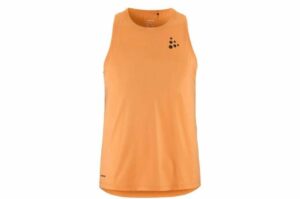Top Seeds: The benefits of hemp, flax and chia
When it comes to healthy fats, all you need is chia, hemp and flax.
Plants are the healthiest source of fat. Their seeds are little fat storage units, full of cholesterol-friendly unsaturated fatty acids. In their simplest actions, polyunsaturated fats (PUFAs) lower cholesterol without affecting HDL. Commonly broken into omega-6 and omega-3 fats, PUFAs are especially potent in immune function, cardiovascular health and brain development.
Nutrition is a relatively new science, so opinions on where to get these fats and how much to eat often change. Current research shows three of the most popular sources of PUFAs are hemp, flax and chia. While these seeds may appear similar, there are some significant differences. Here’s how these tiny gems compare:
Hemp
What is has:
Cholesterol-lowering agents:
Hemp is everywhere. We eat it, drink it and wear it. Though hemp fabric isn’t great for running tights, hemp seeds, oil and drinks are good sources of PUFAs, and they also contain one of the highest concentrations of potent cholesterol-lowering agents, phytosterols.
GLA:
One of hemp’s unique fatty acids, gamma-linolenic acid (GLA), has some anti-inflammatory properties similar to essential alpha-linolenic acid (ALA), but the exact role of GLA in inflammation reduction and prevention is still being studied.
Ideal fatty-acid ratio:
Hemp has the perfect ratio of omega-6 to omega-3s (4:1).
What it lacks:
Enough ALA:
In comparison studies against flax or fish oil, hemp oil does not increase anti-inflammatory omega-3 fatty acids ALA, and brain components DHA or EPA, because hemp has only half the omega-3s as either flax or chia.
Extra omega-3s:
While it has the perfect ratio of fats, the majority of plant fats we ingest come in omega-6 form, making it more prudent that we search for omega-3 sources to balance the omega-6 sources from various vegetable oils already in our diets. Only a few varieties of nuts, seeds and fish have considerable amounts of omega-3s.
Flax
What it has:
ALA:
Both varieties of flax – golden and brown – have 1.75 grams of immune-system-boosting ALA per tablespoon. The daily recommended ALA intake is about one gram per day, but significant anti-inflammatory and cholesterol-reducing effects happen with intakes closer to three grams per day. Avoid linola or solin, a yellow flax that’s very low in omega-3.
Lignan:
Flax seeds also contain lignan, a promising phytoestrogen that modulates signalling between estrogen-dependent cancer cells.
What it lacks:
Vitamin E:
Flax seed is low in vitamin E, a critical antioxidant for our immune systems. Both hemp and chia are very high in vitamin E.
Chia
What it has:
Overall nutrition:
It’s a little-known seed in North America today, but chia was widely consumed by the Aztecs, behind only corn and beans as the most important food. The Aztecs paid taxes in chia, and it’s believed that Aztec warriors and runners sustained themselves on one tablespoon of chia per day. The tiny oval seed even gained fame by being plastered onto clay animals where the seeds would sprout and create a nutritious pet.
Fibre:
Chia seeds soaked in water or fruit juice develop a gelatinous texture, revealing their high soluble fibre content, nearly four grams per tablespoon, which slows digestion and helps nutrient absorption.
ALA:
Commonly eaten raw or added to hot or cold cereals, flours and baked goods, chia has more ALA than either flax, hemp or any other plant food, at more than two grams per tablespoon.
Vitamin E:
Chia also has an excellent antioxidant profile. Vitamin E slows oxidation, as do antioxidants like kaempferol and other flavonols present in chia. Caffeic acids slow tumour growth. Myricetin and quercetin are both anti-inflammatory. Chia’s myriads of bioactive compounds make it a cancer- and cholesterol-fighting blockbuster.
What it lacks:
Variety:
Chia’s antioxidant profile combined with its impressive ALA content it a reasonable magic-pill candidate, but variety in your diet is as important as variety in your training program.
Even within a narrow food category like seeds, nutrient amounts vary. Rather than sticking to the same route every day, change it up a little. Mix all your seeds together or alternate which ones you toss in your cereal. There’s a big benefit to all of them.
Nutrition editor Bobbi Barbarich is a runner, registered dietitian and photographer based in Nelson. B.C.
NEXT PAGE …Arvinda’s Orange-Almond Chai Running Balls Recipe

